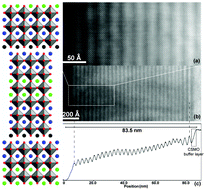The Ruddlesden-Popper structure is an archetypal structure in solid state chemistry, consisting of slabs of perovskite units separated by rock salt layers. But conventional high temperature oxide synthesis methods can’t be used to make these structures when the perovskite blocks are greater than three octahedral thick.
Now Matthew Rosseinsky, at the University of Liverpool, UK, and colleagues have exploited the capabilities of modern thin film deposition to grow an artificial metastable oxide where the perovskite block is six octahedral thick and is made of two distinct perovskite units.
Find out more in their Chemical Science Edge article and let us know your comments on the work below.











